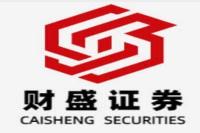Trump's Proposed Automotive Revolution: A Deep Dive into EV Policy and Trade Tensions (Meta Description: Trump, EV policy, automotive industry, trade wars, China, battery materials, tariffs, energy)
Imagine this: A complete overhaul of US automotive policy, a potential trade war with China, and the future of electric vehicles hanging in the balance. Sounds like a Hollywood blockbuster, right? Well, in late 2020, it felt awfully real. Leaked documents revealed a proposed plan from the Trump transition team that sent shockwaves through the automotive industry, sparking intense debate and raising serious questions about the future of American manufacturing, energy independence, and global trade relations. This wasn't just about tweaking regulations; this was a potential paradigm shift, a seismic event that threatened to reshape the landscape of the entire automotive sector. Forget minor adjustments – we're talking a full-blown revolution. And believe me, the implications went far beyond flashy headlines. This wasn't just about cars; it was about jobs, national security, and the very direction of American technological advancement. We're diving deep into the specifics, dissecting the proposed changes, analyzing their potential impacts, and exploring the broader geopolitical context. Get ready for a rollercoaster ride through the complexities of US automotive policy! We’ll uncover the hidden agendas, expose the potential pitfalls, and explore the lasting consequences of this proposed radical transformation. Strap in, because this is going to be one wild ride. We'll examine the proposed changes with a critical eye, looking beyond the soundbites and into the potential long-term ramifications for consumers, businesses, and the global economy. So, let's buckle up and explore the full impact of this explosive proposal.
Trump Administration's Proposed EV Policy and Trade Implications
A leaked document from the Trump transition team in 2020 unveiled a radical plan to reshape the American automotive landscape. The core proposals focused on two key areas: a significant reduction in support for electric vehicles (EVs) and a potential trade war with China targeting automotive components and battery materials. This wasn't a subtle adjustment; it was a proposed 180-degree turn in policy direction. The implications were far-reaching, creating a ripple effect across the industry and beyond.
The plan suggested a complete dismantling of federal support for EVs and charging infrastructure. This included everything from tax credits and subsidies to research and development funding. The rationale, as presented, was to focus on traditional gasoline-powered vehicles, seemingly prioritizing established industries over emerging technologies. Naturally, this sparked an immediate outcry from environmental groups, EV manufacturers, and those who saw the move as a step backward in the fight against climate change.
Simultaneously, the proposed plan targeted China aggressively. It suggested imposing tariffs on all imported automotive components and battery materials, aiming to boost domestic production and reduce reliance on Chinese suppliers. This move was framed as a matter of national security, protecting American jobs and preventing technological dependence. However, such steep tariffs could have significant negative consequences, potentially leading to higher prices for consumers, disruptions to supply chains, and retaliatory measures from China.
Furthermore, the document suggested imposing tariffs on all global battery materials before negotiating individual exemptions with allies. This aggressive, protectionist approach aimed to force a rapid increase in domestic battery production, but the potential for international trade disputes and economic repercussions was immense. It was a high-stakes gambit, potentially jeopardizing established trade relationships and sparking a global trade war.
Analyzing the Potential Impacts
The potential consequences of this proposed policy shift were multifaceted and far-reaching. Let's break them down:
-
Economic Impacts: The proposed tariffs could drastically increase the cost of vehicles and components, impacting both manufacturers and consumers. This could stifle innovation and slow the transition to electric vehicles, potentially hurting the US automotive industry's long-term competitiveness.
-
Geopolitical Implications: The aggressive stance toward China could exacerbate existing trade tensions and lead to retaliatory measures, disrupting global supply chains and impacting various industries. It could also damage US relationships with key allies.
-
Environmental Concerns: The reduced support for EVs could significantly hinder the US's ability to meet its climate change goals. It would slow the adoption of cleaner transportation technologies, increasing reliance on fossil fuels and contributing to greenhouse gas emissions.
-
Job Creation vs. Job Losses: While the plan aimed to create jobs in domestic battery and auto manufacturing, the potential job losses in related industries due to higher prices and disrupted supply chains could significantly outweigh any gains.
The proposed plan was a complex calculation of economic, political, and environmental considerations. Its implementation would have undoubtedly resulted in both winners and losers across numerous sectors – and the outcomes would have been fiercely debated.
A Deeper Look at Battery Material Dependence
The proposed tariffs on battery materials highlight the critical dependence of the automotive industry on global supply chains, particularly those centered in China. China is a dominant player in the production of lithium, cobalt, and other materials crucial for EV batteries. This dependence raises serious concerns about national security and economic vulnerability. The proposed solution – drastic tariffs – was seen by some as a short-sighted attempt to address this issue. While boosting domestic production is a worthy goal, the aggressive approach risked harming the US economy more than it helped.
Table 1: Key Battery Materials and Production Concentration
| Material | Key Producers | US Production Share |
|--------------|--------------------------------------------|----------------------|
| Lithium | Australia, Chile, Argentina, China | Relatively Low |
| Cobalt | Democratic Republic of Congo, Australia, China | Relatively Low |
| Nickel | Indonesia, Philippines, Russia, Canada | Relatively Low |
| Graphite | China, Canada, Brazil | Relatively Low |
The data clearly illustrates the challenge facing the US. Simply slapping on tariffs won't magically create a robust domestic battery material industry overnight. It requires significant investment in mining, processing, and refining capabilities, something that simply can't be achieved quickly.
Counterarguments and Alternative Approaches
Many critics argued that the proposed plan was overly simplistic and potentially counterproductive. More nuanced approaches, such as strategic partnerships, investment in domestic research and development, and targeted incentives for sustainable mining practices, would have been more effective in reducing reliance on foreign suppliers without triggering a trade war. Investing in the development of alternative battery technologies, such as solid-state batteries, would also help diversify the supply chain and enhance US competitiveness.
The Aftermath and Lessons Learned
While the proposed plan was ultimately not fully implemented, the debate it sparked highlighted some crucial issues within the American automotive industry and its global position. The discussion surrounding the future of electric vehicles, trade relations with China, and the importance of diversified supply chains is ongoing. The episode serves as a potent reminder of the complexities and interconnectedness of global economic and political dynamics.
Frequently Asked Questions (FAQs)
Q1: What was the main goal of the Trump administration's proposed automotive policy changes?
A1: The primary goals were to reduce support for electric vehicles, increase domestic production of automotive parts and battery materials, and reduce reliance on China for these components.
Q2: Why did the plan propose tariffs on battery materials?
A2: The tariffs aimed to stimulate domestic production of battery materials and reduce dependence on foreign suppliers, particularly China, which is a major producer of these materials.
Q3: What were the potential economic consequences of the proposed plan?
A3: Potential consequences included higher vehicle prices, disrupted supply chains, and potential job losses in related industries.
Q4: Did the plan receive widespread support?
A4: No, the plan faced significant opposition from environmental groups, EV manufacturers, and others concerned about its potential economic and environmental consequences.
Q5: What alternative approaches could have been pursued?
A5: Alternative approaches included strategic partnerships, investment in domestic R&D, and targeted incentives for sustainable mining practices.
Q6: What are the lasting implications of this proposed plan?
A6: The debate stirred by this proposed policy shift highlighted the complexities of global supply chains and the need for more nuanced approaches to promoting domestic manufacturing and addressing climate change concerns.
Conclusion
The Trump administration's proposed automotive policy changes represent a significant case study in the complexities of balancing economic, political, and environmental considerations in the automotive industry. While the plan ultimately wasn't fully implemented, it spurred a crucial conversation about the future of the US automotive industry, the growing importance of electric vehicles, and the need for a more resilient and diversified supply chain. The debate highlighted the need for strategic planning, long-term investment, and a more nuanced approach to managing global trade relations while addressing climate change concerns. The lessons learned from this episode remain relevant as the world continues to grapple with these challenges. The future of automotive manufacturing is far from settled, and navigating these complexities will require careful consideration and collaboration.



